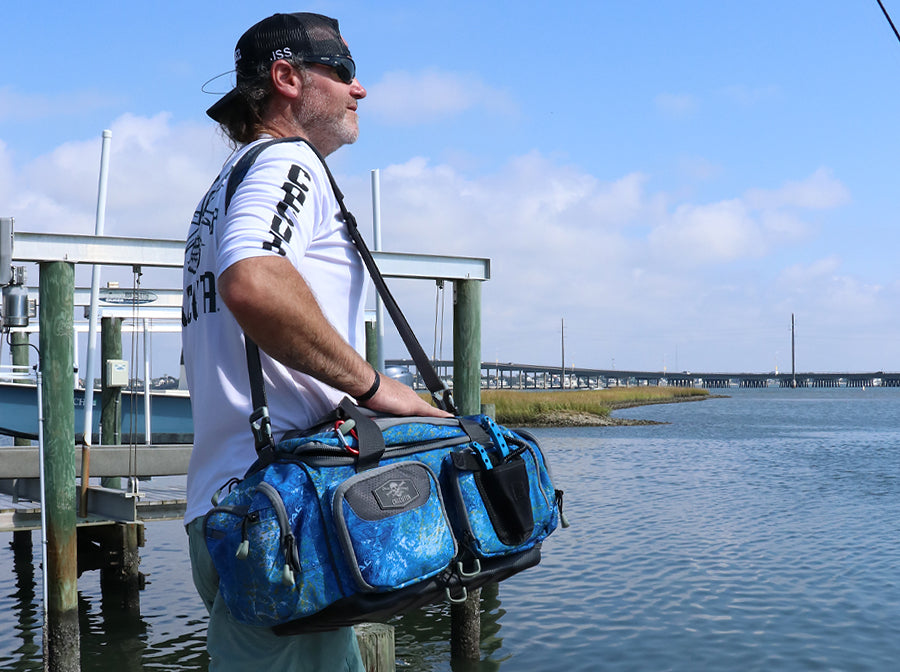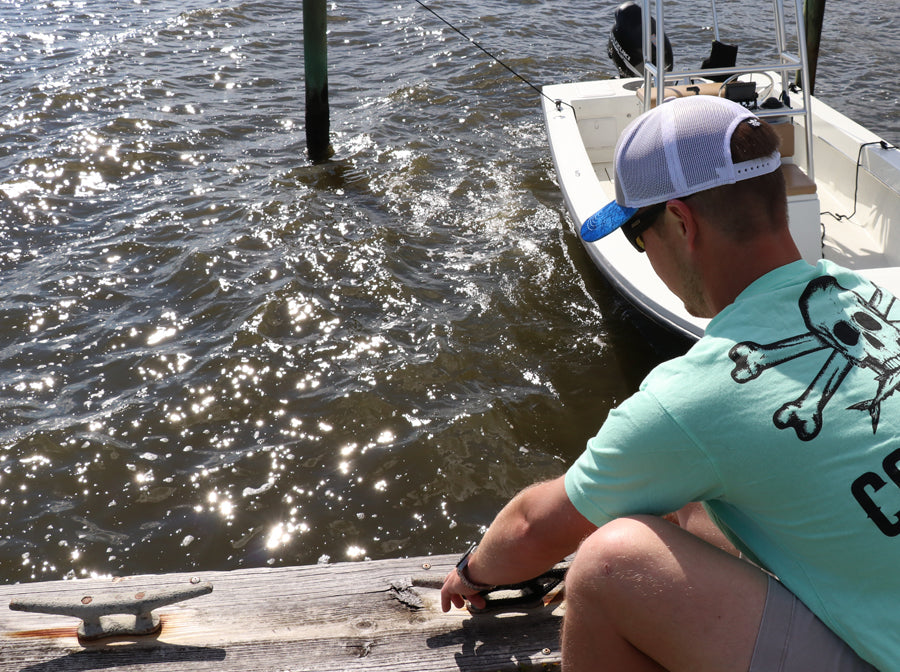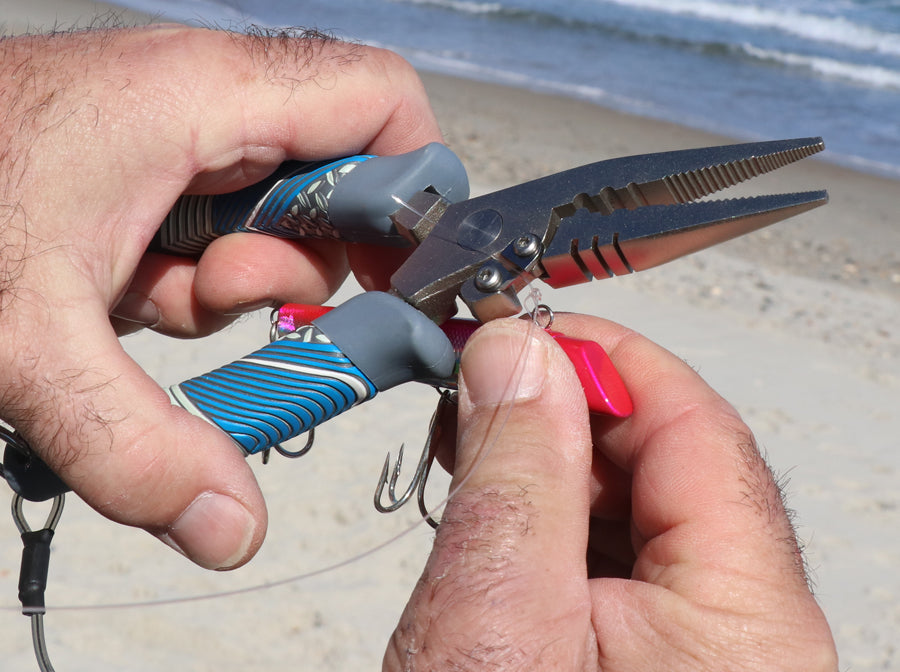Time on the water is a scarce commodity for most of us. Work, school and family activities have a habit of limiting opportunities to fish. To maximize your trips this year, spend a few minutes organizing your fishing tackle storage before the season arrives. Preparation isn’t as fun as wetting a line, but it saves time when you’re fishing and minimizes headaches. The dividends are huge, even with the seemingly simple task of arranging your artificial baits, leaders, sinkers, tools and other fishing gear. Here are some proven strategies to help get you started.
Organizing your tackle storage will help maximize your fishing time.
Streamlining Strategy
There is no one-size-fits-all approach to optimizing fishing tackle storage and accessibility. Every angler and fishing style is different. The loss of precious fishing time digging through gear, untangling messes and sorting sizes is, however, a shared frustration.
That makes the first step in organizing tackle a serious and honest assessment of where you, not someone else, sacrificed the most time while on the water last season. Begin by identifying those items you reach for most. It’s common sense, and more than likely you’ve already placed often-used gear in easy-to-reach places. If not, do so.
In addition, relocate rarely used gear to the lower depths of your tackle box. Pushing it aside or moving it around when the bite’s on is frustrating and robs you of time.
Compartmental Efficiency
Once you’ve identified a streamlined hierarchy, consider the compartments in which each of the items will reside. Like items adjacent to one another keep search time to a minimum. It’s easier to spot that selection of crankbaits if they’re together on one side, instead of widely dispersed. Their proximity also provides a faster and more efficient look at colors, patterns and sizes.
Pro Tip: Adjacent is a huge advantage.
Use the provided dividers to keep tackle neatly sorted. Hooks on lures and their leaders have a nasty habit of commingling in annoying fashion. Weights can be stored separately and securely using clear plastic stack jars, like those from South Bend. Fishing sinkers always seem to escape with every tackle box tumble, but this approach prevents terminal tackle from unwanted migration to parts unseen.
Soft plastic baits—worms, craws, jigs, skirts—should store in separate compartments. Some soft plastics can bleed color and even strip pigment off lures or other tackle, so consider keeping them in a bait binder with clear plastic sleeves.
Protect your soft plastic baits by storing them in a bait binder.
Don’t forget about those pliers, de-hookers, gloves and knives. Odds are good you reach for some of them often. If you use a modern, soft-sided tackle bag, oversized items like these are often ideally situated in outboard locations—like side pouches.
Situational Efficiency
There are an infinite number of pursuits when it comes to fishing, from offshore to backcountry trout waters, probing for panfish and countless others. Topography changes, unexpected species show up on big water and the gear needed for each of the situations is usually different. Unfortunately, what rises to the top of a tackle box organized for catfish likely lurks at the bottom of one tailored for largemouth bass.
It's all fine and good if you’re passionate about a single finny adversary, but what if you’re not that picky? The answer is building a modular and dynamic system using clear plastic utility boxes.
Modular tackle systems can be quickly and easily customized.
When you’re ready to step up your game, soft-sided tackle bags come with several of these organization solutions. It’s the ideal way to address changing conditions without sacrificing on-the-water efficiency.
Tailor the contents of each box for each species, or situation. Then simply grab the appropriate box and you’re ready to ring the dinner bell with minimum fuss and muss. An added advantage is the fact that if you spot a distant waterway and are eager to wet a line, you only need to carry one small box to the water. It’s a whole lot better than hauling cumbersome gear that you don’t need.
The modular approach is also good in areas where regulations change seasonally. Dedicate one box to spinners with barbless hooks when they’re required—during early and late trout seasons, for example—and simply leave it at home when you’re heading to the water the rest of the year.
Random Efficiency
Parents with small anglers need bobbers and floats readily accessible, but a clutter of them at the top of your tackle box is a confusing, time-robbing mess. Clear plastic containers allow you to view their contents fast. Those with color can enhance organization, but labels help as well.
Just as importantly, return every item to its proper compartment or place when fishing and double check when done for the day. Those few minutes it takes in organizing your tackle, and keeping it that way, pay huge dividends later by making every fishing minute a pleasure.
Pre-season tackle prep helps you focus on catching fish.
More Resources
Fishing Boat Checklist: 11 Steps to Prepare for Fishing Season
Pre-Season Study: 6 Tips to Improve Your Fishing IQ
7 Tips to Prep Your Fishing Gear for the Spring Season
Performance Sunglasses: Your Best Defense Against the Sun
Best Fishing Tackle Storage Systems







